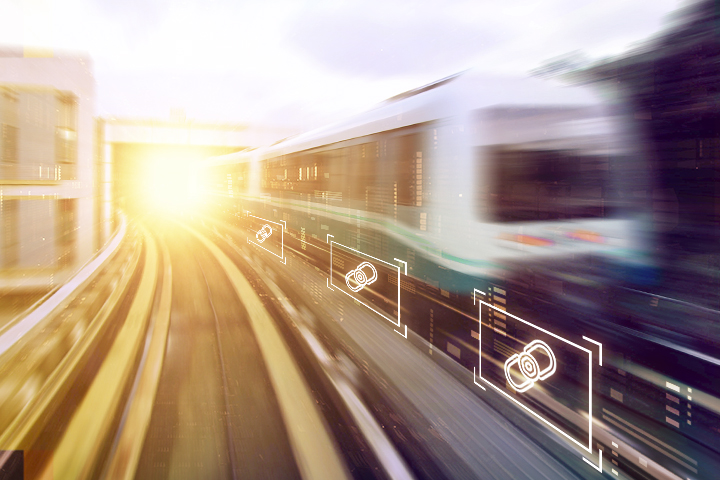The emergence of the Industrial Internet of Things (IIoT) has enabled a broad array of enterprises to gather extensive data from previously unexplored origins and discover novel pathways for enhancing efficiency. By acquiring data on performance and the environment from field equipment and machines, organizations now possess even greater information to aid in making well-informed business choices. Regrettably, there exists an excessive amount of IIoT data for people to analyze single-handedly. Consequently, a majority of this data remains unexamined and untapped. It comes as no surprise that businesses and industry professionals are turning to artificial intelligence (AI) and machine learning (ML) solutions for IIoT applications to gain a comprehensive overview and make more rapid intelligent decisions.
Ensuring Trains Stay on Schedule Isn’t as Simple as It Sounds
All trains—whether operating on an inter-city railway system or a local mass transit network—ride on metal tracks that must remain upright and correctly spaced according to a set standard gauge at all times. In the event that the tracks become uneven, the trains could derail. This explains why some form of support, known as railroad ties or ballasts, is placed horizontally beneath the tracks. For a smooth journey, railroad tracks must be firmly secured to the ties using spikes, screws, or bolts. Due to the continuous friction and vibration between rapidly moving train wheels and the tracks, as well as damage from environmental factors, track fasteners deteriorate and break over time. Consequently, timely identification and repair of track fasteners are crucial for guaranteeing the safety of any railway network.
A major urban railway system in East Asia required a more effective method to inspect the countless fasteners used to stabilize extensive miles of tracks across its entire mass transit network. Situated in the Ring of Fire where numerous earthquakes occur, this transit system cannot afford to take risks with the integrity of its infrastructure as constant tremors exacerbate the routine wear and tear from rolling stock and heavy passenger loads. Usually, after service hours on a particular route, the railway operator dispatches maintenance personnel to conduct manual visual examinations of the tracks and check for loose fasteners. Should a loose or damaged track fastener be identified, it is promptly rectified before services resume on that route.
Utilizing Artificial Intelligence of Things for Speedier and More Accurate Anomaly Detection
Given that visual inspection of railway tracks during non-operating periods is laborious and the risk of data omission due to human fatigue is present, the transit system opted to implement an AI edge computing solution that could expedite track fastener inspections using computer vision. Specifically, the transit operator sought a personalized AI inference model with object recognition for track fastening systems that could identify defects in track fasteners while the trains are in motion and conduct maintenance in between journeys. AI inferencing for track fastener inspections also necessitates the edge computer to possess robust computational performance and storage capacity for video data, compact dimensions and fanless architecture for fitting into small enclosures, wide operational temperature range, and adherence to EN 50155 standards for deployment on rolling stock.

The Resolution
The initial step involved installing high-definition cameras beneath the train carriages, enabling the system operator to capture real-time video footage of track fasteners as trains traverse the tracks during service hours. Subsequently, the video data is transmitted to an onboard edge computer for image processing and object recognition of defects in the track fasteners. The railway operator chose the Moxa V2406C Series rail computer for its compact nature, incorporating an Intel® Core™ i7 processor that furnishes substantial computational prowess for running the trained AI inference model. Additionally, the V2406C operates with low power consumption, boasts a wide operational temperature range of -40 to 70°C, and supports the Intel® OpenVINO™ toolkit. Moreover, it features two mPCIe slots for Intel® Movidius™ VPU modules to expedite image recognition computations and edge AI inferencing. By substituting manual visual inspections with real-time AI visual inspections during operational hours, the transit system was able to enhance efficiency and curtail maintenance costs.
To delve deeper into deploying edge-computing platforms for AIoT in genuine industrial settings and to explore additional exemplar use cases, download our Industrial AIoT white paper.
- Not Only for Automobiles: Discovering CANbus Technology in Various Industrial Settings - October 29, 2024
- Boost Your Network Performance: An Exciting Manual to PoE Switches! - September 10, 2024
- Understanding Gigabit Switches: Industrial vs Regular Gigabit - September 4, 2024


